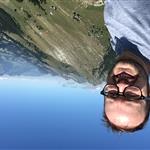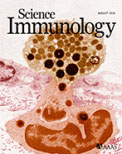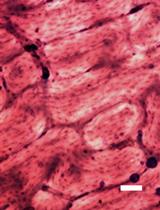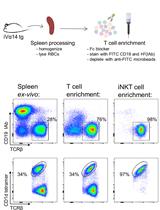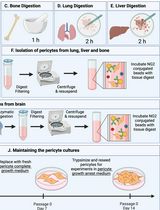- EN - English
- CN - 中文
Isolation of Neutrophil Nuclei for Use in NETosis Assays
分离中性粒细胞核用于 NETosis分析
发布: 2019年09月05日第9卷第17期 DOI: 10.21769/BioProtoc.3357 浏览次数: 6307
评审: Luis Alberto Sánchez VargasAnonymous reviewer(s)
Abstract
Neutrophils are critical immune cells that protect our body against invading pathogens. They generate antibacterial DNA structures called neutrophil extracellular traps (NET). Recently we identified a new mechanism that enables NET formation. We observed that following recognition of lipopolysaccharides, inflammatory caspases cleave Gasdermin D and enable NET generation (Chen et al., 2018). This protocol describes how we purify neutrophil nuclei to visualize NET formation by live microscopy. After neutrophil purification from murine bone marrow, neutrophils are lysed in a hypotonic buffer using a nitrogen cavitation device to prevent lysis of neutrophil granules and subsequent contamination by granules proteases. Lysed neutrophils are then centrifuged, and nuclei are counted. The protocol described here is straightforward and enables the study of early changes happening in the nuclei of neutrophils undergoing NETosis with limited contamination by granule proteases.
Keywords: Neutrophil extracellular trap (NET) (中性粒细胞胞外陷阱(网))Background
NETosis is a neutrophil-specific host-defense mechanism that enables DNA extrusion to trap bacteria during infection (Papayannopoulos, 2018). This process is associated with dramatic changes in neutrophil nucleus structure and the release of DNA and chromatin outside the neutrophil. NETosis is studied mostly by microscopy using live or fixed neutrophils stimulated with various triggers like bacterium or Phorbol 12-myristate 13-acetate (Gonzalez et al., 2014). We recently described that netosis can be activated upon detection of intracellular LPS by the noncanonical inflammasome (Chen et al., 2018). Using purified neutrophil nuclei, we showed that incubation of nuclei with recombinant Gasdermin D (Shi et al., 2015), a pore-forming protein, and the inflammatory caspase-11, is sufficient to trigger nuclear changes that are associated with NETosis. Here we offer a simple framework to study NET generation on purified nuclei to visualize early changes happening before and during DNA extrusion. Our protocol enables the study of NET formation without contamination by neutrophil proteases [which can also trigger NET formation (Papayannopoulos, 2018)] and was developed to study the role of Gasdermin D during the early step of NET formation.
Materials and Reagents
- Pipette tips (1000 μl, 200 μl, 10 μl)
- Tissue, Kimwipes disposable wipers (Sigma-Aldrich, catalog number: Z188956-1PAK)
- 6-well plate, sterile tissue culture grade (Sigma-Aldrich, Corning, catalog number: SIAL0506-100EA)
- 15 ml sterile conical tubes (Sigma-Aldrich, Greiner, catalog number: T1943-1000EA)
- 1.5 ml tubes sterile (Eppendorf, catalog number: 0030 120.086)
- 27 G needle (Sigma-Aldrich, catalog number: Z192384-100EA)
- 10 ml disposable plastic syringe (Fischer Scientific, catalog number: 15889152)
- 12 weeks-old mouse C57BL/6J
- EasySep neutrophil enrichment kit (StemCell Technology, catalog number: 19762)
- Ethanol
- RPMI 1640 (Thermo Fisher Scientific, Gibco, catalog number: 61870010)
- TC grade 1 M HEPES (Thermo Fisher Scientific, Gibco, catalog number: 15630080)
- Trypan blue solution (Thermo Fisher Scientific, catalog number: 15250061)
- ATP sodium (Sigma-Aldrich, catalog number: A7699-1G)
- Magnesium Chloride (MgCl2) (Sigma-Aldrich, catalog number: M2670)
- Potassium Chloride (KCl) (Sigma-Aldrich, catalog number: P9333)
- Phenylmethanesulfonyl fluoride (PMSF) (Sigma-Aldrich, Roche, catalog number: PMSF-RO)
- cOmplete Mini, EDTA-free protease inhibitor tablets (Sigma-Aldrich, Roche, catalog number: 11836170001)
- Opti-MEM, reduced-serum media (Thermo Fisher Scientific, catalog number: 31985062)
- 70% Ethanol solution (see Recipes)
- Neutrophil media (see Recipes)
- PMSF stock solution (see Recipes)
- ATP stock solution (see Recipes)
- Hypotonic buffer (see Recipes)
Equipment
- P1000 micropipette
- Scissors
- Hematocytometer
- Centrifuge (Eppendorf, model: 5415C)
- Incubator
- -80 °C freezer
- Cell disruption vessel, 45 ml (Parr Instrument Company, catalog number: 4639)
- Nitrogen tank linked to a pressure-reducing valve
- Mouse Dissecting kit (World Precision Instrument)
- Tissue culture hood
Procedure
文章信息
版权信息
© 2019 The Authors; exclusive licensee Bio-protocol LLC.
如何引用
Boucher, D. (2019). Isolation of Neutrophil Nuclei for Use in NETosis Assays. Bio-protocol 9(17): e3357. DOI: 10.21769/BioProtoc.3357.
分类
免疫学 > 免疫细胞分离 > 嗜中性粒细胞
细胞生物学 > 细胞分离和培养 > 细胞分离 > 免疫磁珠
您对这篇实验方法有问题吗?
在此处发布您的问题,我们将邀请本文作者来回答。同时,我们会将您的问题发布到Bio-protocol Exchange,以便寻求社区成员的帮助。
Share
Bluesky
X
Copy link


